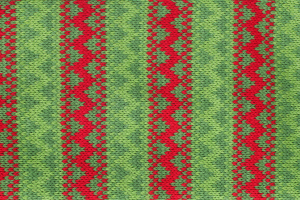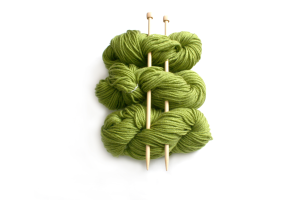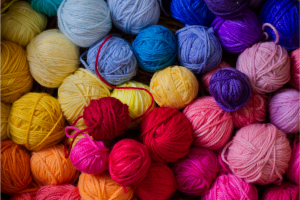Knitting isn’t just about creating fabric; it’s about crafting something meaningful. Whether you’re making a cozy scarf or an intricate sweater, the way you finish your piece matters just as much as the knitting itself. This is where techniques like invisible binding come into play, ensuring your project looks polished and professional.
So, what exactly is the invisible binding technique, and why is it so beloved by knitters worldwide? Let’s dive into this fascinating method and uncover its secrets.
Certainly! Here’s an extended conclusion:
Knitting isn’t just about creating fabric; it’s about crafting something meaningful. Whether you’re making a cozy scarf or an intricate sweater, the way you finish your piece matters just as much as the knitting itself. This is where techniques like invisible binding come into play, ensuring your project looks polished and professional.
The invisible binding technique is more than just a finishing method; it’s a testament to the care and precision that knitters pour into their work. By seamlessly blending edges and creating clean transitions, this technique elevates even the simplest projects, giving them a refined, store-bought appearance.
Beyond aesthetics, invisible binding adds durability to your knitting, ensuring that your creations stand the test of time. This makes it a favorite among knitters who want their pieces to be both functional and beautiful. From heirloom-quality blankets to snug hats for loved ones, this method ensures every stitch counts.
Embracing techniques like invisible binding also highlights the ongoing learning journey in knitting. Every project is an opportunity to grow, explore new skills, and enhance your craft. With each bind-off, you’re not just finishing a piece—you’re adding to a legacy of artistry and creativity.
So, the next time you pick up your needles, consider the invisible binding technique. It’s a small detail that makes a big impact, transforming your handmade projects into timeless treasures that you—and those who receive your work—will cherish for years to come.
Knitting is a timeless craft that combines creativity, skill, and patience. Each stitch tells a story, whether it’s of warmth shared through a gift or the meditative process of crafting something with your own hands. While many knitters focus on selecting the perfect yarn or mastering complex patterns, the finishing touches often hold the power to make or break a project.
One of the most important aspects of knitting is achieving a clean and cohesive final look. After spending hours, or even days, on a piece, you want it to look polished—like it’s been made with love and expertise. That’s where the right finishing techniques, such as invisible binding, come in. These methods ensure that your project not only looks professional but also feels complete.
Invisible binding isn’t just a technique; it’s a skill that can elevate your knitting to the next level. It allows edges to blend seamlessly, making it almost impossible to tell where one part ends and another begins. Whether you’re a seasoned knitter or just starting out, learning this technique can add a touch of finesse to all your creations.
In this guide, we’ll explore what makes invisible binding so special, how it enhances the durability and beauty of your work, and why it’s a go-to method for knitters around the globe. With the right approach, this simple but powerful technique can transform your projects from handmade to heirloom-quality.
What is the Invisible Binding Technique?
Defining the Invisible Binding Technique
The invisible binding technique is a method of finishing knitted projects that ensures a seamless, polished look. Unlike traditional binding methods, which may leave visible seams or ridges, invisible binding integrates the edges flawlessly, giving your work a professional appearance.
History and Evolution of This Technique
While knitting itself dates back centuries, techniques like invisible binding are relatively modern. This method has evolved as knitters sought ways to enhance their projects’ aesthetics, especially in an era where handmade garments are celebrated for their craftsmanship.
Why is the Invisible Binding Technique Important?
Enhancing the Look of Your Projects
Have you ever admired a perfectly finished sweater and wondered how it looks so flawless? Chances are, the invisible binding technique was at play. It eliminates visible joins, making your project look as if it was knitted in one continuous piece.
Improving the Durability of Knitted Items
Beyond looks, this technique strengthens the seams, ensuring that your creations last longer. Whether it’s a baby blanket or a winter hat, durability matters, and invisible binding delivers.
Tools and Materials Required
Essential Knitting Tools
Before you start, make sure you have:
- A pair of high-quality knitting needles
- Stitch markers to keep track of your progress
- A tapestry needle for finishing the edges
Recommended Yarns and Needles
Opt for yarn that matches your project’s weight and texture. Fine, smooth yarns often yield the best results for invisible binding.
How to Perform the Invisible Binding Technique
Step-by-Step Instructions
Preparing Your Work
Start by ensuring your project is free of loose ends. Block your piece if necessary, as this will make the edges easier to work with.
Executing the Seamless Finish
Using a tapestry needle, weave the yarn through the stitches, carefully aligning both edges. The key is to mimic the knit pattern, creating the illusion of a continuous fabric.
Tips for Perfecting the Technique
Common Mistakes to Avoid
- Pulling the yarn too tightly, which can distort the fabric.
- Skipping stitches, leaving gaps in the seam.
Practice Projects for Beginners
Start with small projects like wristbands or coasters to get a feel for the technique before moving on to larger items.
Applications of the Invisible Binding Technique
In Garment Construction
This technique is ideal for joining shoulder seams, necklines, and cuffs, ensuring that garments fit comfortably and look impeccable.
For Home Décor Projects
From pillowcases to throws, invisible binding adds a touch of sophistication to your home projects.
Benefits of Using the Invisible Binding Technique
Aesthetics and Seamlessness
The technique creates a smooth, professional finish that’s hard to achieve with other methods.
Enhanced Comfort
Without bulky seams, your knitted items feel soft and cozy against the skin.
Challenges of Mastering the Invisible Binding Technique
Learning Curve for Beginners
Let’s be honest—this technique can be tricky at first. But with patience and practice, it becomes second nature.
Troubleshooting Common Issues
If your seams aren’t lying flat, recheck your tension and alignment.
Comparing Invisible Binding with Other Finishing Techniques
Traditional Binding Methods
Older methods like whip stitching are quicker but lack the refined look of invisible binding.
Why Invisible Binding Stands Out
Its seamless appearance and durability make it the gold standard for finishing.
Invisible Binding in the World of Modern Knitting
Popular Patterns Using This Technique
Look for patterns labeled “seamless” or “invisible finish” to explore this method.
Designers Who Advocate Invisible Binding
Top designers often recommend this technique for high-quality, handmade results.
Incorporating Invisible Binding Into Your Projects
When to Use It
Use this technique for pieces where aesthetics and comfort are key, like baby garments or heirloom items.
Matching It to Your Knitting Style
If you enjoy detail-oriented projects, you’ll love invisible binding.
Advanced Techniques Related to Invisible Binding
Kitchener Stitch
This method is often paired with invisible binding for grafting toe seams in socks.
Grafting Techniques
Mastering grafting opens the door to more advanced projects.
Learning Resources and Tutorials
Online Tutorials and Videos
Check out platforms like YouTube for step-by-step guides.
Books and Workshops
Books like The Principles of Knitting offer in-depth insights into this technique.
The invisible binding technique is a game-changer for knitters who value aesthetics and functionality. While it may take some practice, the results are well worth the effort. Whether you’re a beginner or a seasoned pro, incorporating this method into your projects will elevate your knitting to new heights.
Mastering the invisible binding technique not only enhances the appearance of your knitting projects but also opens up new possibilities for creative expression. Its seamless finish ensures that your garments and accessories have a polished and professional look, making them stand out as truly handmade yet refined pieces.
As you continue to explore and practice this technique, you’ll discover its versatility in a variety of patterns and projects, from delicate lace shawls to sturdy sweaters. It’s an investment in your skill set that will pay off in countless ways, allowing you to tackle more complex designs with confidence and finesse.
Moreover, the invisible binding method exemplifies the beauty of craftsmanship—where attention to detail transforms simple materials into works of art. By incorporating this technique into your repertoire, you join a tradition of knitters who prioritize both form and function, ensuring that every stitch contributes to a cohesive and harmonious whole.
Ultimately, knitting is about more than just creating; it’s about growth, creativity, and the satisfaction of bringing your vision to life. The invisible binding technique is a valuable tool in this journey, empowering you to produce pieces that are not only practical but also exquisite. So, pick up your needles, embrace the challenge, and watch your projects flourish with this transformative method.




